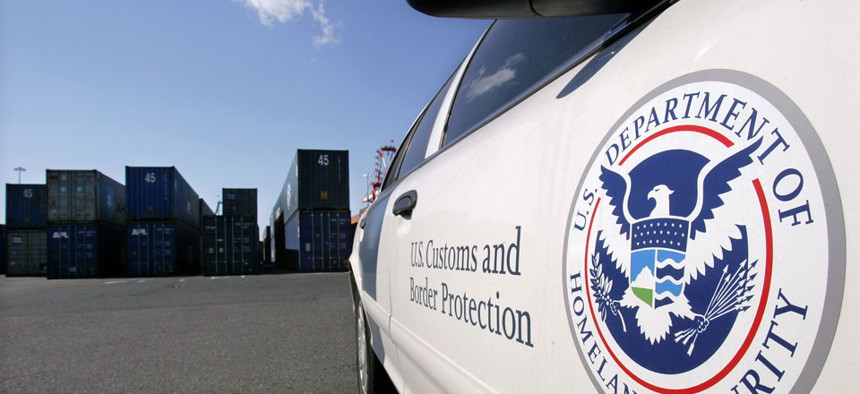Feds Want Backpack Radiation Detectors That Don’t Use Rare Gas

A U.S. Customs and Border Protection patrol car sits near stacked cargo containers at the port of Newark. Of the 5,000 containers that leave the seaport each day, 98 percent pass through radiation detectors. Mel Evans/AP File Photo
The hope is to stop providing helium-3 for these systems next year.
The government is looking for backpack-based radiation detection systems that don’t require an increasingly rare isotope of helium traditionally used in such devices.
The Defense and Homeland Security departments want to test the radiation detectors against current standards as part of a program to develop a shared data system that can help agencies as well as state, local, tribal and territorial governments choose the best radiation detection devices for their needs, contracting documents said.
Helium-3 is a nonradioactive isotope that is a byproduct of the radioactive decay of material used to enhance the power of nuclear weapons.
“The nation’s limited helium-3 supply will persist into the foreseeable future and it is highly unlikely there will ever again be enough helium-3 supply available to address the demand for neutron detection for Homeland Security,” the request for information said.
The Domestic Nuclear Detection Office at DHS expects alternatives to helium-3-based handheld and backpack-based radiation detectors will be commercially available in 2015. The government, which regulates helium-3, will stop providing helium-3 for neutron detection systems at that time, the documents said.
For years, DNDO has been researching neutron detection systems that don’t require helium-3, according to S.Y. Lee, a DHS spokesman. Currently, helium-3 alternatives are used in walk-through and drive-through radiation detection systems, and DHS and the Pentagon are trying to assess the commercial availability of alternative technologies for handheld and backpack-based systems.
The agencies this week extended the deadline for responses to the RFI by more than two weeks to July 31. DHS officials declined to say why the deadline was extended or if it was because they hadn’t received enough responses from industry.






